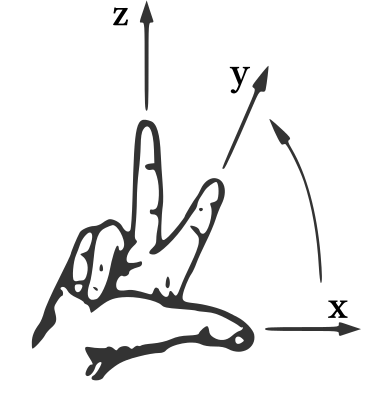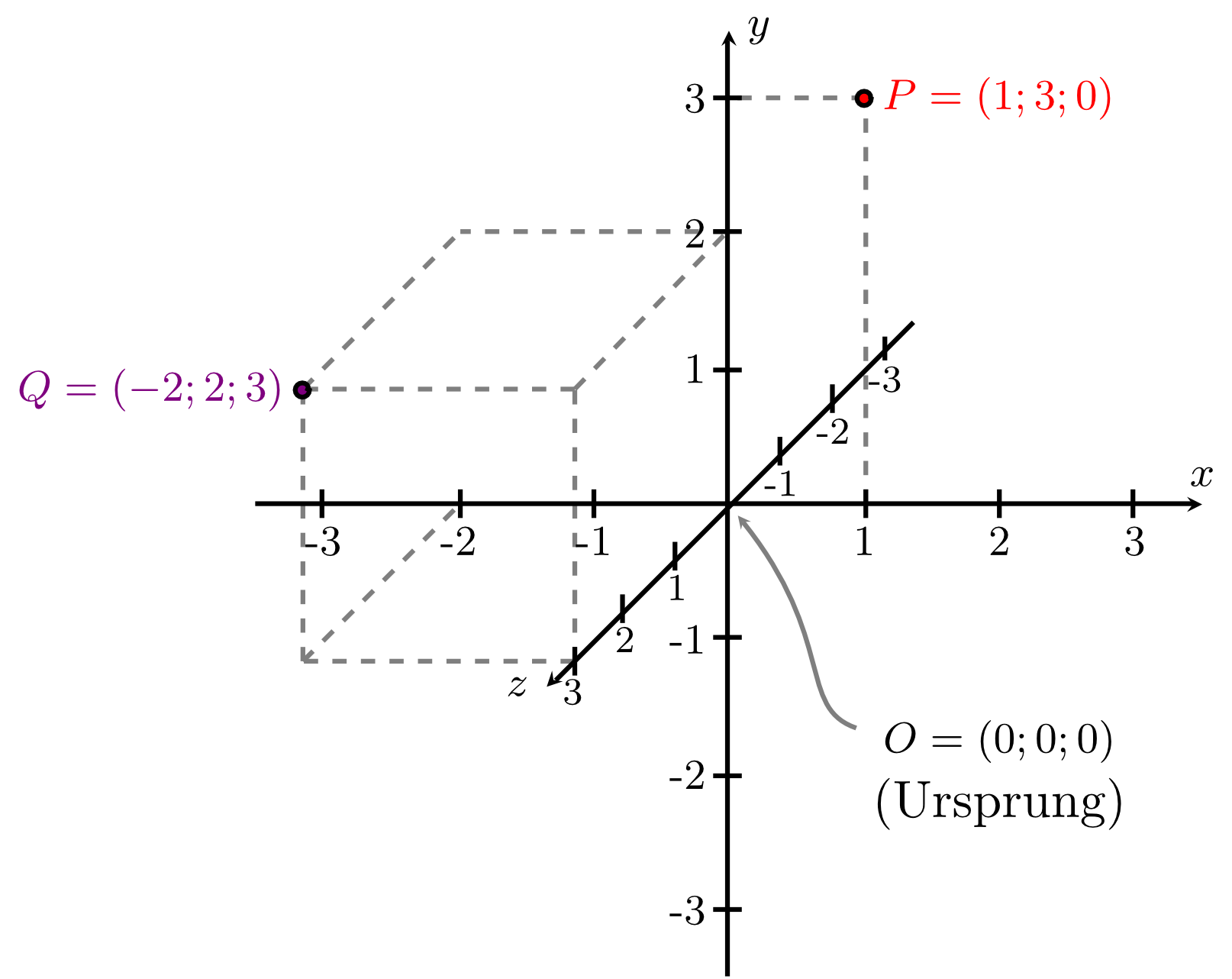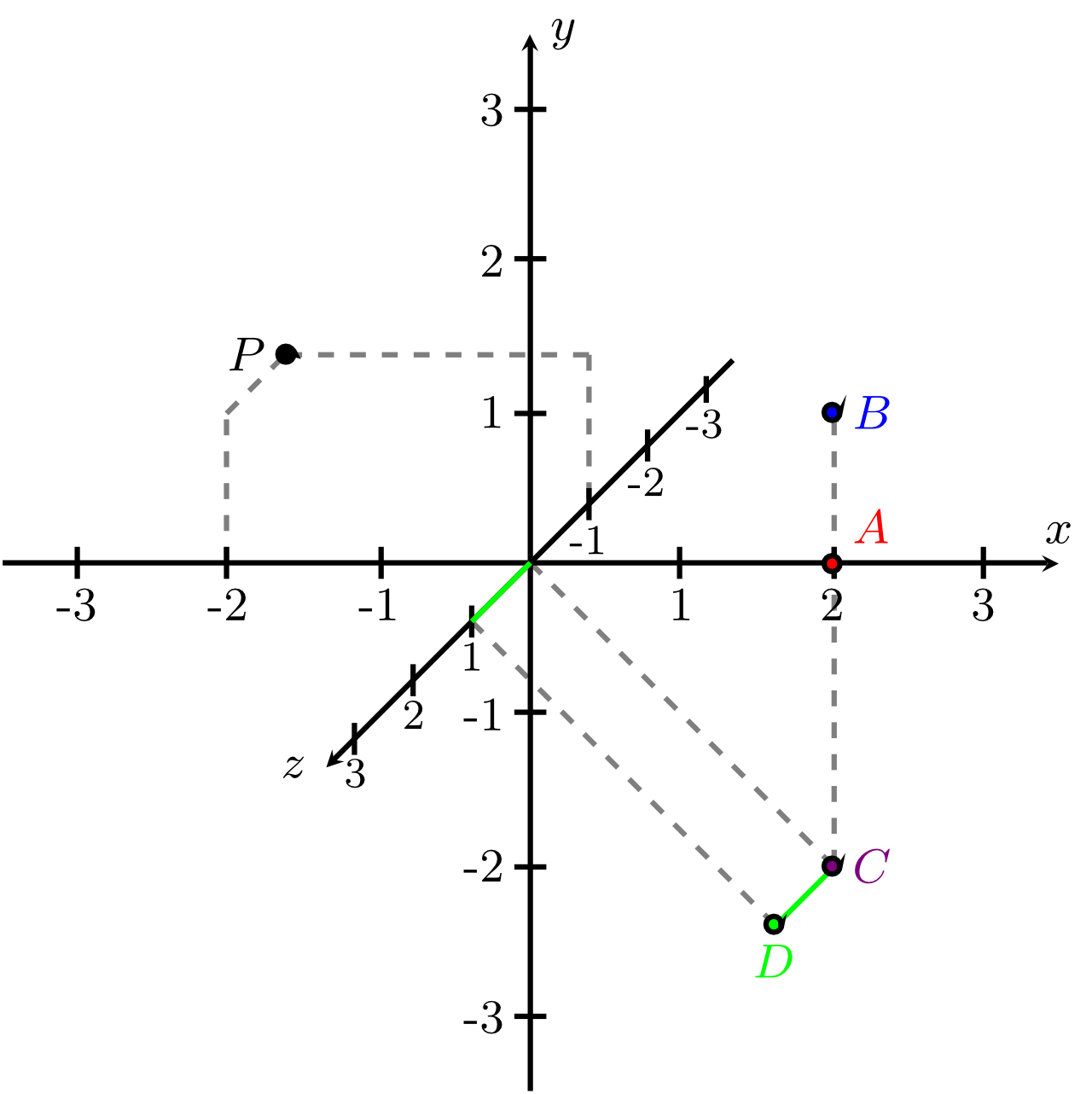Chapter 10 Basic Concepts of Descriptive Vector Geometry
Section 10.1 From Arrows to Vectors10.1.2 Coordinate Systems in Three-Dimensional Space
In Section 9.1 of the previous Module 9 we introduced Cartesian coordinate systems and points in the plane described by coordinates with respect to these coordinate systems. A solid understanding of these concepts is now presumed in this Module. To describe a point in three-dimensional space, three coordinates are required. Thus, a coordinate system in three-dimensional space needs three axes, the -axis, -axis and -axis (sometimes called the -axis, -axis, and -axis). Usually, points will be denoted by upper-case Latin letters , and their coordinates will be denoted by lower-case Latin letters as variables. Extending the notation from Module 9, the coordinates of a point are written, for example, as follows:
or
Here, the -coordinate of the point is , its -coordinate is and its -coordinate is . The point with the coordinates is called the origin, and it is denoted by the symbol . All these points are drawn in the figure below.
The dashed lines in this figure indicate how the coordinates of points in such a three-dimensional representation can be drawn and read off. Note that these lines are all parallel to the coordinate axes.
We will only consider coordinate systems in three-dimensional space with perpendicular coordinate axes - these are Cartesian coordinate systems. Furthermore, we will use the common mathematical convention that coordinate systems in three-dimensional space are right-handed. Sometimes these are also called positively oriented. This means that the positive directions of the , , and -axis can be determined by means of the right-hand rule as illustrated in the figure below.

However, there are various possible representations. In the figure above showing the points and , the -axis points to the right, the -axis points up, and the -axis points perpendicularly outwards from the drawing plane. In the figure which illustrates the right-hand rule, the -axis points to the right, the -axis points backwards into the drawing plane, and the -axis points up. However, both coordinate systems are right-handed.
As in the two-dimensional case discussed in Section 9.1.2, an arbitrary number of points in three-dimensional space can be collected into a set of points. The following notation is used:
Info 10.1.2
The set of all points (in space) specified as coordinate triples with respect to a given Cartesian coordinate system is denoted by
The symbol reads as " three" or " to the power of three". This indicates that a point can be uniquely described by a coordinate triple (also known as an ordered triple) consisting of three real numbers.
 Onlinebrückenkurs Mathematik
Onlinebrückenkurs Mathematik

